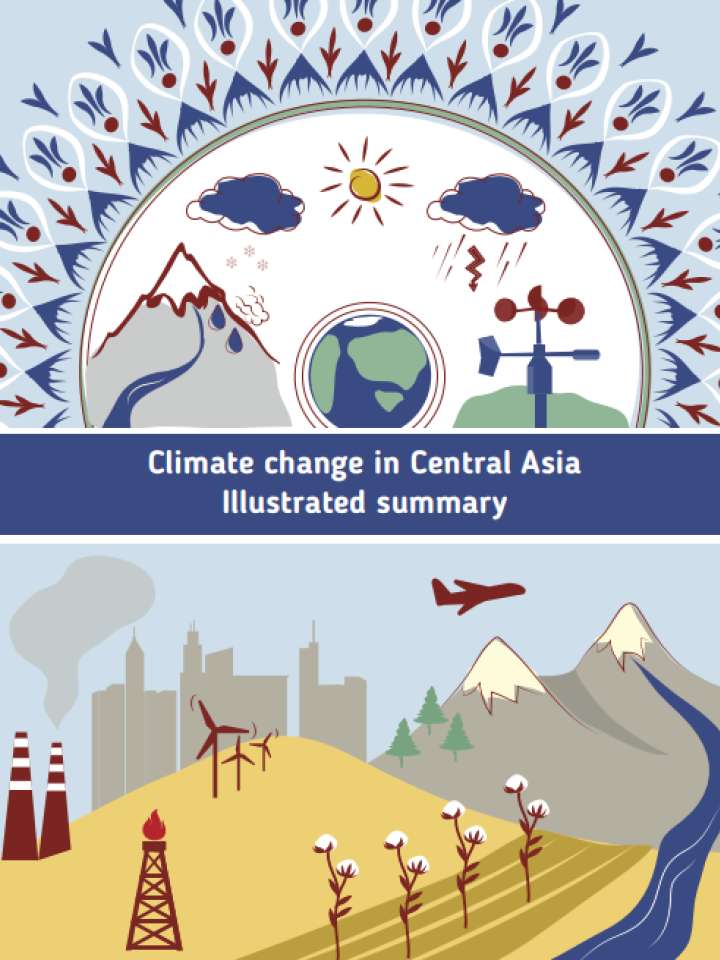Climate change in Central Asia: Illustrated summary
This publication on Central Asia provides visual information on current global and regional climate change impacts and areas of concerns, reports on greenhouse gas emission sources and trends, and presents the regional and country efforts to transition to clean energy.
The information sources include official country information from the national communications to the UNFCCC, other international and domestic information such as statistics and news reports, and scientific papers.These data sources vary in terms of methodology, reference years and completeness, and the combination of international and domestic sources gives readers a regional summary that uses information as diverse and comparable as possible. Information reported by the countries is available on the UNFCCC and country websites, but regional reporting is harder to find.
In Central Asia, the decline in economic activity in 2020 resulting from the global pandemic came with a decline in greenhouse gas emissions, but also with serious socioeconomic disruptions. For the first time in Central Asia, the regional Climate Adaptation and Mitigation Program for the Aral Sea Basin (CAMP4ASB) is supporting countries in their domestic climate change responses. The CAMP4ASB activities include mobilizing NGOs, academia, parliamentarians and hydrometeorological services to identify and address climate change challenges; holding regional climate forums; demonstrating climate adaptation and clean energy technologies; and encouraging the mass media to cover climate issues. The countries initiated CAMP4ASB in 2015 under the auspices of the Executive Committee of the International Fund for Saving the Aral Sea (IFAS). The World Bank provides US $38 million in funding with additional financing from the Green Climate Fund (GCF).
Explore further
